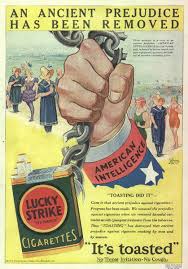Blogs especially PR blogs are needed to be presented in a professional manner. Looking at a good presentation in public relations, by having a professional and ascetically appealing presentation such as a blog, these are needed as it can help to attract audiences and which ultimately can help you persuade them to believe what is being said or presented (Abdullah 2012). But having a professional presentation doesn’t mean it has to be dull and boring, it should also reflect your personality and also tie in with your knowledge (Felton 2004), as this will also help attract more people as they can connect as a real person and it helps to make the blogs come alive (Fursdon and James 2009).
Image 1: Professional, Blog, Personal
Source: Braid Creative and Consulting (2012)
As shown by CQU (2015) a good professional presentation should include the following:
- Plenty of white space making it easier to read
- The choice of font will also contribute to professionalism
- Overusing colour can become very distracting for the reader
- The use of photos and graphics throughout documents can assist understanding
It is also seen that short, simple titles are usually more effective and also by having references in blogs this helps shows the readers that the information they are reading is accurate and therefore professional (Careerealism 2014).
Taking these points into example looking at my blog it shows plenty of white space as the whole page is white except for the text and pictures, the font is nice and simple and nothing fancy so it’s easy to read, as just stated the only colour used on my blog is in the pictures which is making them pop out and also assisting the understanding of the content itself. So by looking at these it is believed that all of my blog posts are presented professionally.
References:
Abdullah, Z 2012, ‘Improving educational and professional standards of public relations professionalism: Towards a mixed methods research approach’, International Journal Of Multiple Research Approaches, vol. 6, no. 2, pp. 109-124.
Braid Creative & Consulting 2012, How To Pepper Business Into Your Personal Blog, viewed 20 May 2015, http://www.braidcreative.com/blog/how-to-pepper-business-into-your-personal-blog
Careerealism 2014, 5 Tips To Create A Great Professional Blog, viewed 20 May 2015, http://www.careerealism.com/creating-professional-blog/
CQ University 2015, Module 6: The public relations campaign – logistics, COMM11110, Introduction to Public Relations, CQUniversity e-courses,https://moodle.cqu.edu.au/course/view.php?id=215
Felton, I 2004, Blogs as Excellent Public Relations Tools, viewed 20 May 2015, http://www.seochat.com/c/a/website-promotion-help/blogs-as-excellent-public-relations-tools/
Fursdon, R & James, M 2009, Why are PR agencies blogging? An exploratory study of the blogging practices of public relations agencies, viewed 20 May 2015, http://nova.newcastle.edu.au/vital/access/services/Download/uon:11627/ATTACHMENT01?view=true





